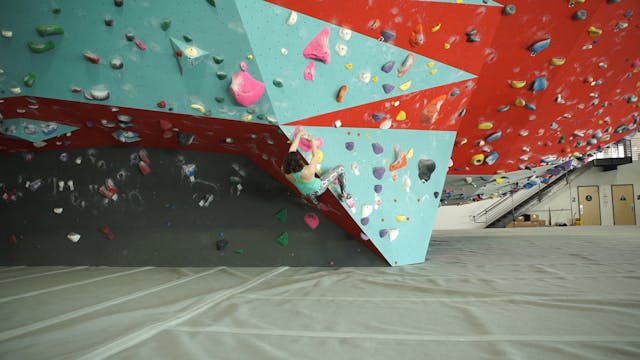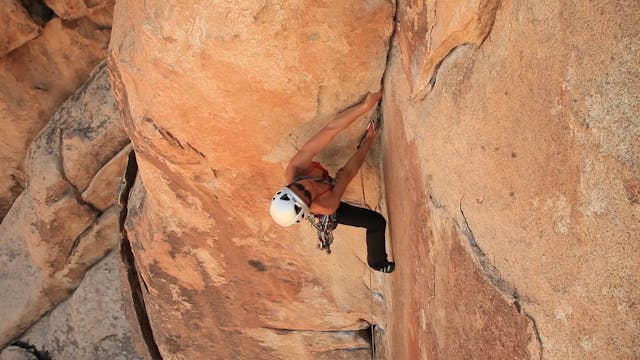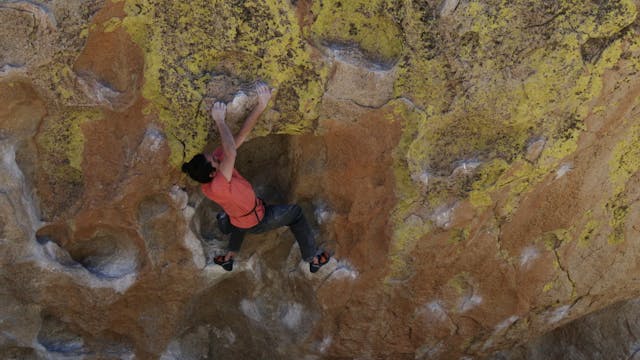Climbing Movement: 10. Edging for Feet
Climbing Movement
•
1m 37s
“Edging” is a term that describes precise placement of the inner or outer edge of the climbing shoe.
Edges are small, in-cut, or somewhat positive footholds that lend themselves to accurate foot placements.
Edges are not always horizontal. More difficult routes have edges at different orientations such as diagonal, vertical, or other variations.
When climbing on Edges, you want to press perpendicular to the plane. Distinctly perpendicular!
A common mistake when Edging is casually placing your foot on the wall as a “smear”, compared to a precise placement on a specific edge. Smears are often used on slopers, when climbing low-angle Slabs, and/or when “stemming” in a blank “dihedral”. For more on this, see our video on “Stemming”.
Horizontal edges are the easiest to use as an edging example. As long you maintain your heel level with your toe, gravity takes care of the rest. Of course it's not that simple on overhanging routes. This is when body position is used to transfer load onto your legs, which are the largest and strongest muscles. This is referred to as Body Posturing.
For more on this, see our videos on “Posturing”, “The Process of Movement”, and “Backstepping”.
We hope you found this video helpful. Feel free to comment below with questions or thoughts!
Please remember, climbing is inherently dangerous. Climb at your own risk.
Up Next in Climbing Movement
-
Climbing Movement: 11. Hips In
The theory of “Hips In” relates to our “Posturing” and “Process of Movement” videos.
In posturing, the act of “hips in” involves transferring weight from your hands to your feet.
The only time your hips are not in, is when you are looking for your feet. Otherwise, you should almost always...
-
Climbing Movement: 12. Sequencing
“Sequencing” involves envisioning potential combinations of moves for hands and feet, as well body positioning.
Visualizing yourself making the moves helps improve your chances for success. From there, one takes the pre-rehearsed movements in their head, and attempts them on the wall.
When ...
-
Climbing Movement: 13. Breathing
Being aware of your breath is critical for climbers. We don’t mean fresh breath; we mean proper breathing.
Calm, regular breathing is key to helping muscles remain oxygenated and ready for use.
A great way to be aware of your breath is to exhale out the mouth, in an audible manner. If you ...


